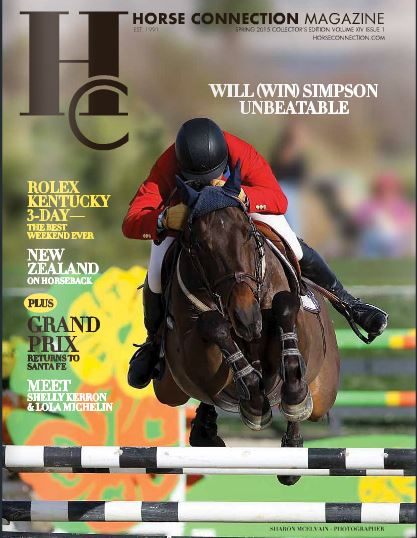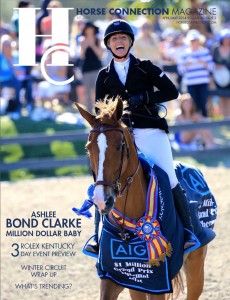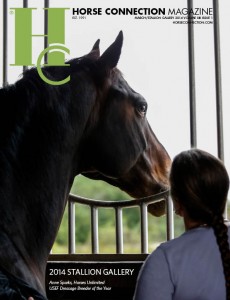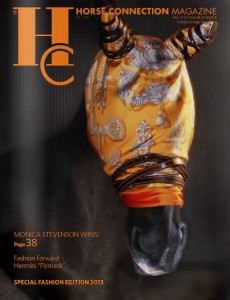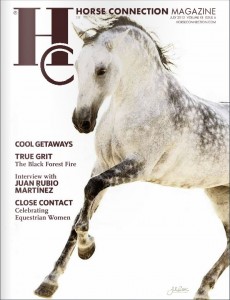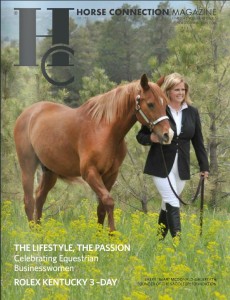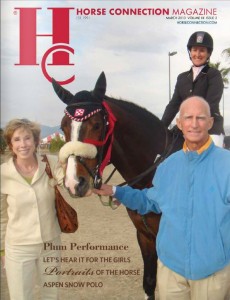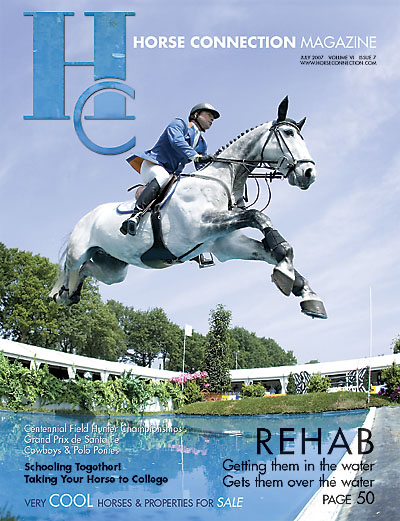
Healing Horses – What works for us, works for them – July 2007
Geoff Young
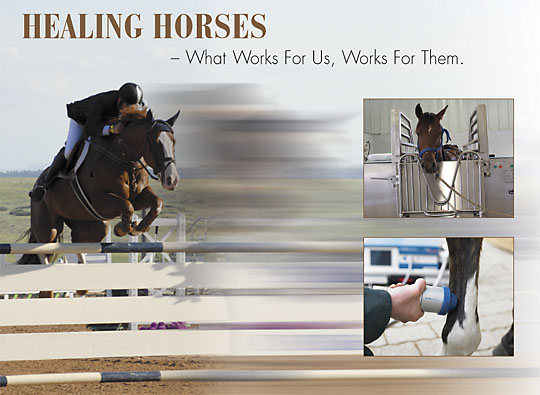 The healing of horses has had an important place in veterinary and medical literature throughout history. Medieval and Renaissance theories about equine physiology and health often mirrored theories about humans, and the literature of both was inherently linked. Bloodletting, astrology, and ancient texts were used by both physicians and veterinarians to heal their patients, and many discoveries, including the circulation of the blood, was developed in tandem by studying humans and horses.
The healing of horses has had an important place in veterinary and medical literature throughout history. Medieval and Renaissance theories about equine physiology and health often mirrored theories about humans, and the literature of both was inherently linked. Bloodletting, astrology, and ancient texts were used by both physicians and veterinarians to heal their patients, and many discoveries, including the circulation of the blood, was developed in tandem by studying humans and horses.
At some point, we stopped looking at correlations between human and equine health issues, and left the horse behind as we ventured on towards finding new ways and new approaches to dealing with our own physical issues. Thankfully, that is now changing, and the horse is becoming the beneficiary of all that we have learned about healing ourselves. After all, we have been “scopeing” our knees for many years before we started doing it to horses!
We now know that surgery is only as good as the physical rehabilitation afterwards, but in many medical circles there is still a disconnect between surgery and rehabilitation.
Veterinary medicine has changed dramatically in the past 20 years, for better or worse. Horses can be put back together surgically, but for the most part are destined to be pasture pets, unable to continue athletically as they were before. It’s time to start thinking past this practice, and take advantage of the new technologies and the new ideas in regards to equine rehabilitation.
A New Approach
Kirsten and Hub Johnson started work with equine rehabilitation 20 years ago in Texas. Five years ago they moved to Versailles, KY, just outside of Lexington, and opened KESMARC, a world-class equine sports medicine facility, dedicated to the recovery and conditioning of high-end equine athletes.
“KESMARC is the gray area between injury and return to training,” explained Kirsten. “We saw equine athletes that didn’t return but should have. After surgery, the vet would prescribe hand walking and turnout and those were the only options. We have returned a horse back to run in a graded stakes race when the vet said there’s no way he’d ever come back.”
 For people like Kirsten, there had to be another way. “We’re an evolution in progress,” she says. “There is no cookie cutter approach to rehab. The same injury requires different rehabilitation depending on the discipline and the temperament of the horse. It’s complex and we take it very seriously. We don’t practice medicine but we know when good medicine is being practiced. We know what we do, but more importantly, we know what we don’t do-we’re not trainers.”
For people like Kirsten, there had to be another way. “We’re an evolution in progress,” she says. “There is no cookie cutter approach to rehab. The same injury requires different rehabilitation depending on the discipline and the temperament of the horse. It’s complex and we take it very seriously. We don’t practice medicine but we know when good medicine is being practiced. We know what we do, but more importantly, we know what we don’t do-we’re not trainers.”
What Kirsten and her trained staff do at KESMARC is utilize the latest in rehab technology. While they offer many treatments, the hyperbaric oxygen therapy is groundbreaking.
HBOT is a revolutionary medical technology useful for treating acute injuries as well as enhancing the healing of chronic disorders. Already, clinical experience has shown that HBOT can be successfully applied to many of the same conditions in the horse as is applied in human medicine. Here’s how it works. Oxygen in the blood is dramatically increased when breathing oxygen at two or more atmospheres of pressure (as opposed to our normal atmospheric pressure of one ATA (atmospheres absolute). Increasing the atmospheric pressure in the chamber during a treatment increases the solubility of oxygen into the body. This process allows oxygen to enter plasma and tissues more readily and promotes the formation of new cells, thus further enhancing oxygen availability. Ischemic wounds and areas of infection now have new cells to increase circulation and supply life saving oxygen and antibiotics.
KESMARC has treated many “bleeders” with HBOT and had great success with upper airway problems. “The body healing itself- what a concept,” laughs Kirsten. “Helping the body heal itself, that’s what we do.”
KESMARC is also employing a vibrating platform therapy for bone density and fast twitch muscle conditioning. There is good possibility of treating laminitis by increasing bone density with vibrations. It could also be used to help stall-bound horses keep muscle tone and to stimulate circulation without having to get them moving.
“It starts with owners and trainers demanding a different type of medicine,” says Kirsten. “People are starving for new and different information and that’s exciting!”
As the field of equine rehabilitation expands, personnel will need to be educated and trained to meet the demands of the new rehab technologies. One of the top colleges in equine studies is stepping to the forefront to meet these needs.
New York’s Morrisville State College is planning to build a new state of the art equine rehabilitation center. In June of 2001, USA Today described the Morrisville State College Equine Institute as being home to the most diversified equine studies program in the nation. The MSC Equine Institute offers options at the Associates and Bachelor of Technology level in five separate areas: equine breeding, English and Western training and equitation, and pleasure driving and racing( Standardbreds and Thoroughbreds).
The 270 students majoring in Equine Science at MSC have varied objectives; many intend to pursue a career in some aspect of the horse industry, while others may take technical courses from related areas of study to expand their employment opportunities. And with the completion of the rehabilitation center, careers in equine rehabilitation will be created.
James Hastie, former Director of Communications for USET, and now the technical director spearheading the Morrisville College Foundation (MCF) Equine Rehabilitation and Physiology Center, sees this as the final piece of a complex equine puzzle.
“We want to be the first school to offer a full degree in equine rehabilitation,” he explained. “With our partners at Cornell, we want to model the facility after KESMARC, with the focus on getting sporthorses back into competition. And if we can’t, help the horse transition to a secondary career.”
Founded in 1908, this college of agriculture and technology is well-suited to provide horse owners across the Northeast with affordable and convenient access to the latest aquatic and hyperbaric equine rehabilitation and strength conditioning therapies. To that end, MCF is currently seeking $5,000,000 to expand its existing 302-student/400-horse operation and develop the nation’s first baccalaureate of science degree in equine rehabilitation and physiology.
This program will be a big step forward in meeting the industry’s needs. Hastie adds, “We tend to get students who really want to learn the equine business, and that can only reap benefits in the future.” If you’d like to contribute to the MCF Equine Rehabilitation Center go to www.morrisville.edu
The Frontera Aquatread and Rehab Center is next to the Sunland Park racetrack in New Mexico, and offers many alternative therapies in regards to horse rehab. “We address emotional as well as physical issues,” said Jon Hestar, one of the “healers” on staff at Frontera. Utilizing a team of professionals in many different areas, this facility offers a wide variety of traditional, proven modalities as well as alternative and holistic remedies.
In addition to Aquatread therapy, Frontera uses herbal healing, sports massage, a corrective farrier, and even an animal communicator. “We don’t ignore any option,’ said Hester. “Some of these alternative cures have been around for 100 years. There has got to be something to them,” said Hester. “We try to get to the foundation of an injury, and that can take many avenues.”
The New Frontier
 Humans have used many of the new therapies available to horses successfully for years. And research is showing that these therapies can promote healing and prevent injury as never seen before.
Humans have used many of the new therapies available to horses successfully for years. And research is showing that these therapies can promote healing and prevent injury as never seen before.
Cold-water hydrotherapy has been used for quite sometime in Europe, but is just now catching on here in the US.
It takes a horseman to understand horses, and Donna D Marki of Therapeutic Advantage is a big believer in cold-water hydrotherapy. Donna, a lifelong equestrian who has trained with George Morris and currently with Chris Kappler, knows all about physical issues in horses. She and her husband manufacture a stainless steel spa on their farm in Bedminster, NJ. It took a trip to England to discover this healing machine. “We brought one of the spas over and used it on my grand prix horse who had a suspensory injury,’ said Donna. “The horse healed beautifully-we couldn’t even find the injury! The horse is now doing dressage.”
The theory behind cold water hydrotherapy is this: Ice water is between 45-50 degrees, whereas the water in the spa is chilled to 35 degrees. Epsom salt is added to the water to draw out heat and sea salt is added to increase density of the water. The depth of the water provides pressure on an injury and no other therapy can get the leg that cold. The oxygen content of water at 80 degrees with aeration is four parts per million. At 60 degrees it still remains four parts per million. However, when the water is between 35 and 40 degrees, the oxygen content triples to 12 parts per million. The skin absorbs oxygen from the water increasing the oxygen content of the blood and the tissue and that promotes the healing process.
Swollen legs return to normal size after a spa treatment, which only lasts ten minutes. Pain from injury is numbed out within minutes, and the rush of blood circulation after leaving the spa
provides important components to the healing process.
Several grand prix riders have used the Therapeutic Advantage spa including Ian Miller and John Pearce. It can provide total preventative therapy if you use it before you work your horse as well as after.
“At the WEG trials, Nona Garson’s horse, Languster, made it through six grand prix in four days using the spa treatment before and after each class. The spa keeps cold in the legs for up to four hours and feels so good to the horse,’ Donna explained. She added, “With the spa, you can rehabilitate your horse at home. How about no more vet visits!” she laughed.
Serenity Equine is a hospital in Virginia that is doing post-surgical rehabilitation therapy using sequential cryo-compression and proper digital realignment. Sequential cryo-compression involves the use of a triple segment sleeve that inflates with cold liquid sequentially from distal to proximal around an injured joint or limb. This chilled water pressurizes the sleeve during treatment and comfortably lowers the tissue temperature. This modality combines cold (to slow down or minimize acute inflammation reactions) and sequential compression (to reduce edema and post-traumatic swelling by increasing lymphatic drainage.)
Andrea E. Floyd, DVM, performs surgery and correction from the hock down at Serenity Equine. “We have had great success with the cryo-compression and digital realignment in conjunction with massage and final rehabilitation on the Euroxciser, a horse exerciser.”
As with humans, getting moving after surgery is vital towards recovery. “I prefer to start the horses moving just as soon as they are comfortable enough to do so,’ said Floyd. “I also believe strongly in stopping all post-surgical edema and inflammation as it leads to adhesions and scarring within the tissues that may be irreversible. I see no difference in the rehabilitation process between human and equine athletes.”
Focus-IT, LLC is the distributor for Swiss-based Storz Medical AG shockwave equipment which they developed. Shockwave therapy
began with effects seen when lithotripsy (the fragmentation of a stone in the urinary system) was given to patients years ago. It is a technology that has been improved upon over several years.
There are two kinds of shock wave therapy methods: focus and radial. Both treat the same indications and both are non-invasive therapies done outside of the body (extracorporeal – hence the name “extracorporeal shockwave therapy” or ESWT). Storz Medical equipment uses the electromagnetic principle to generate the focused shock wave. Focus IT has both focus shock wave and radial shock wave machines.
Radial shock waves are pneumatically generated and do not “focus” in one small point like focused shock waves do, instead they “radiate” out and cover a larger area, but do not go as deep as a focus shock wave does.
Jessica L. Streib of Focus IT explains the benefits of shockwave therapy. “Shock wave therapy has been found to be a wonderful alternative to surgery due to it being non-invasive, not painful, doesn’t require anesthesia, treatments are quick and outpatient. Shock wave therapy is beneficial in treating tendon, ligament, bone, joint, muscle, tissue injuries or pain in these areas.”
Streib continues, “It has been found that when the shock waves enter the body, biological effects occur causing improved blood supply to the area which causes the body to essentially heal itself. The shock waves stimulate tendon and bone repair as well as tissue regeneration thus relieving pain in the area.”
Who would have imagined that treatment for gallstones and kidney stones would end up benefiting injured horses?
Respond Systems, Inc. manufactures laser therapy and magnetic therapy systems useful for treating soft tissue injuries and for relief of pain caused by injury, arthritis, and other degenerative diseases found in dogs, cats, and horses.
Doreen Hudson of Respond Systems explains the healing effects of magnetic therapy. “Pulsing magnetic fields affect bone and tissue at a cellular level allowing nutrients to move back and forth through the cell walls promoting healing. Injuries prevent this nutrient movement through the cells.”
Respond Systems have developed a product called the Iron Foot. It is a pulsating magnetic pad that the horse stands on, sending magnetic fields all the way up to the hock. The battery-powered pad is mobile and is an excellent therapy for the working sporthorse.
Laser and magnetic therapies have been around since the 70’s in Europe, and have proven to be an effective and painless treatment.
Top riders such as Leslie Burr Howard, Anne Kursinski, and Carol Lavell have used laser and magnetic therapy as a routine course of treatment for their horses.
A New Tomorrow
 The advances in technology have and will continue to shape and define the way we treat our horses. The therapies mentioned have been proven to aid in recovery and healing; however, the best use of these technologies may be in preventing injury altogether.
The advances in technology have and will continue to shape and define the way we treat our horses. The therapies mentioned have been proven to aid in recovery and healing; however, the best use of these technologies may be in preventing injury altogether.
Jami Jensen, owner of Crooked Willow Farms, has used treadmills and the Aquapacer in a preventative rehabilitation program for her horses. From her amateur horses to her grand prix jumpers, Jensen has found the benefits of preventative treatment to be tremendous.
Matt Davis, operations manager at Crooked Willow Farms, says, “Jami’s horses are in the most unbelievable shape I’ve ever seen.”
Using the Aquapacer, one of several models of underwater treadmills that conditions without impact, Jensen’s horses are put into a conditioning program that involves three days a week in the water, then work on the treadmill and then an exerciser.
“The horses can really build their topline and hind end in the water. They put their butt down and really push off on the treadmill.” Davis continued, “The incidents of injury and lameness in our grand prix horses have gone way down. Vet bills for lameness issues are a fraction of what they used to be.”
“This time of year we back off the riding and turn up the conditioning,” said Davis. “Ten to fifteen minutes in the pool really loosens up their backs, especially our stallions during breeding season. They can get sore backs and hips from an active breeding season and this helps them recover quickly and efficiently.”
As with humans, horses have benefited greatly from the advancement in human rehabilitation technology. Using the technology in a preventative course of therapy may indeed be the best way to protect the horse from injury, but, being horses there will always be physical issues in the equine athlete. But unlike several years ago, those issues don’t necessarily mean the end of a career.
As Kirsten Johnson from KESMARC put it, “I don’t think there’s a horse that ever wakes up in the morning that doesn’t want to do their job.” And with the expanding revolution of horse rehabilitation, they will be able to continue to do their job, as long as we continue to do ours in regards to them.
For additional information:
KESMARC www.kesmarc.com
Morrisville State College www.morrisville.edu
Frontera Aquatread & Rehab Center www.nmhorsehealers.com
Theraputic Advantage Spa www.therapeuticadvantage.com
Serenity Equine www.serenityequine.com
Focus IT www.eswt.net
Respond Systems Inc. www.respondsystems.com
Crooked Willow Farms www.crookedwillowfarms.com










